Marine Microbe Contains Multitudes
A deep dive into microbial genomics reveals one bacterial species is made of four ecologically distinct groups with different lifestyles. [Read More]
 A deep dive into microbial genomics reveals one bacterial species is made of four ecologically distinct groups with different lifestyles. [Read More]
A deep dive into microbial genomics reveals one bacterial species is made of four ecologically distinct groups with different lifestyles. [Read More]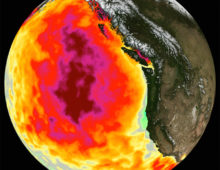 With genomic samples collected before, during and after The Blob, researchers developed a preliminary model of how marine microbial communities are affected by warming events. [Read More]
With genomic samples collected before, during and after The Blob, researchers developed a preliminary model of how marine microbial communities are affected by warming events. [Read More]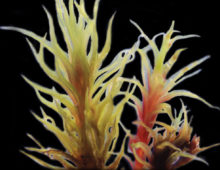 High-quality reference genome sequences of the male and female fire moss plants are now available, and lessons from their sex chromosomes could help improve crop yields. [Read More]
High-quality reference genome sequences of the male and female fire moss plants are now available, and lessons from their sex chromosomes could help improve crop yields. [Read More]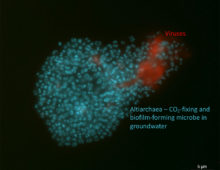 Researchers describe how viruses repeatedly attempt to infect and destroy their hosts – and how the microbes resist. [Read More]
Researchers describe how viruses repeatedly attempt to infect and destroy their hosts – and how the microbes resist. [Read More]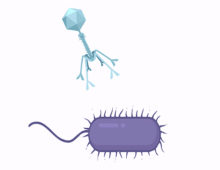 A genetic element that enables rapid, targeted mutation is surprisingly widespread and appears to allow viruses to hunt new microbial prey. [Read More]
A genetic element that enables rapid, targeted mutation is surprisingly widespread and appears to allow viruses to hunt new microbial prey. [Read More]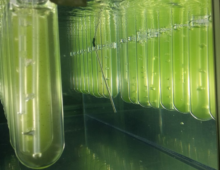 A collaborative approach highlights how a screening and characterization pipeline could help accelerate algae biotechnology research efforts. [Read More]
A collaborative approach highlights how a screening and characterization pipeline could help accelerate algae biotechnology research efforts. [Read More] While thousands of species of fungi and bacteria dwell on — and within — the forest floor, who’s recycling the plant biomass? [Read More]
While thousands of species of fungi and bacteria dwell on — and within — the forest floor, who’s recycling the plant biomass? [Read More]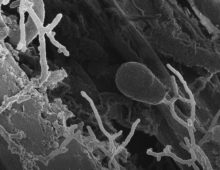 Combing through the genomes of four anaerobic fungal species has revealed, for the first time, that this group is unexpectedly powerful: they can whip up dozens of complex natural products, including new ones. [Read More]
Combing through the genomes of four anaerobic fungal species has revealed, for the first time, that this group is unexpectedly powerful: they can whip up dozens of complex natural products, including new ones. [Read More] The CheckV tool helps researchers to assess the completeness of virus genome sequences and complements a community effort to develop guidelines and best practices for defining virus data quality. [Read More]
The CheckV tool helps researchers to assess the completeness of virus genome sequences and complements a community effort to develop guidelines and best practices for defining virus data quality. [Read More]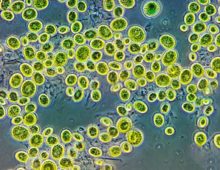 By bringing together publicly available algal genomes into one place, PhycoCosm allows users to easily compile data that answers what genes are present in which organisms, when are they expressed, and what they do. [Read More]
By bringing together publicly available algal genomes into one place, PhycoCosm allows users to easily compile data that answers what genes are present in which organisms, when are they expressed, and what they do. [Read More]